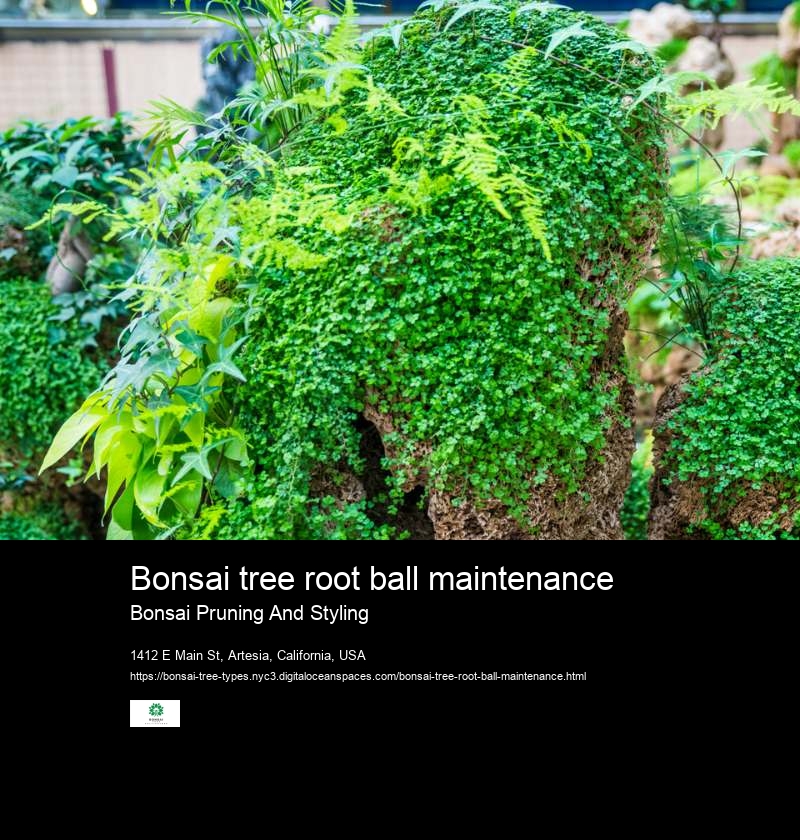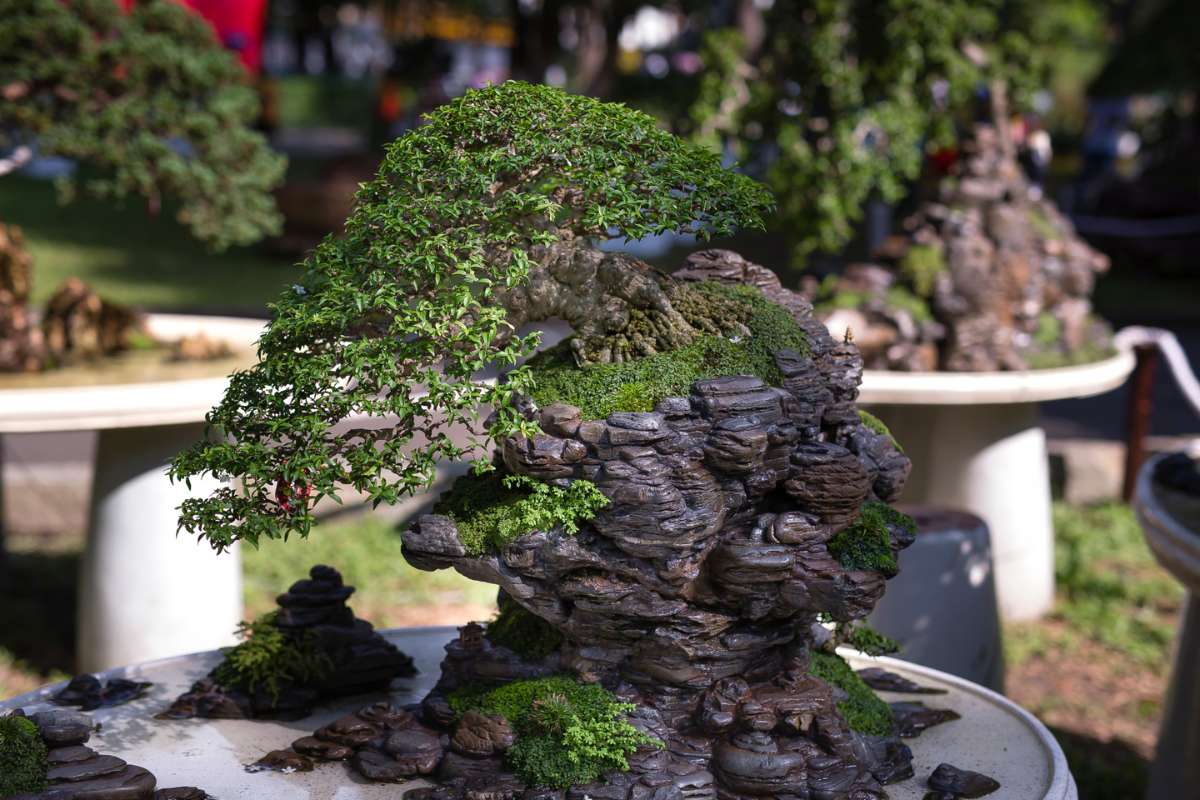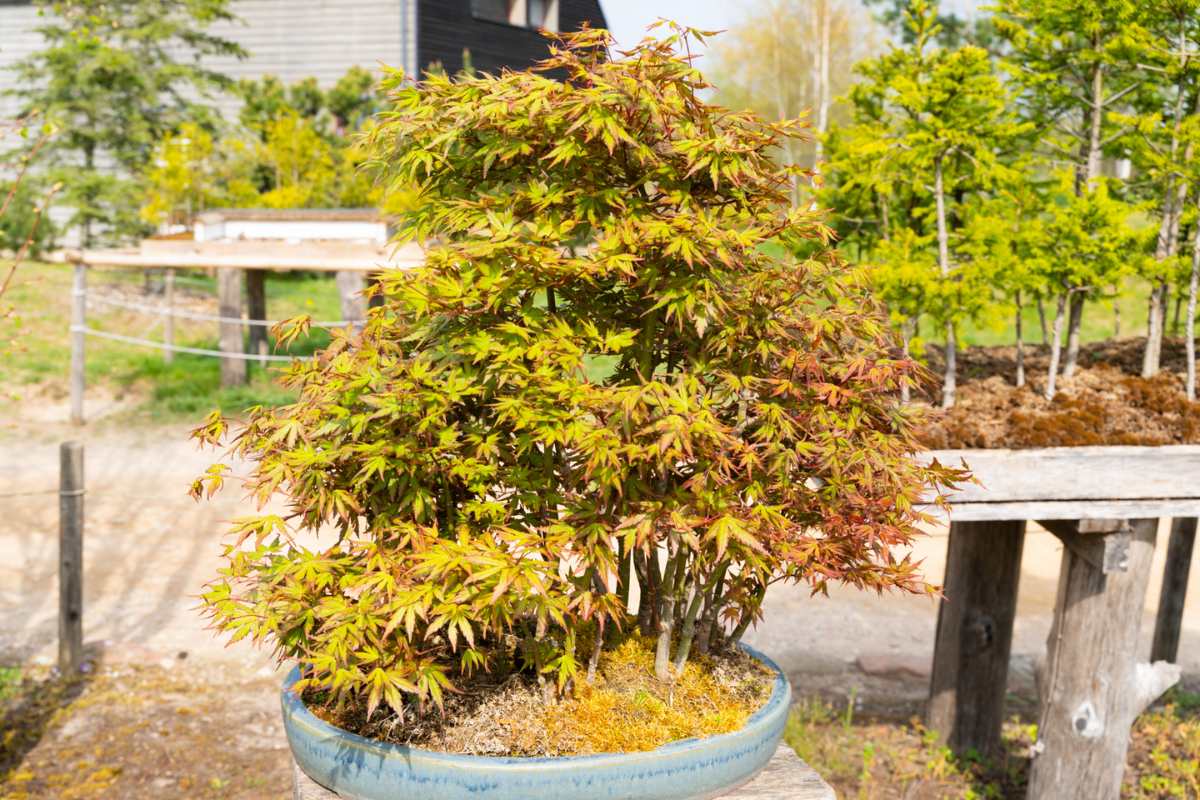Bonsai tree root ball maintenance
How do I prevent my bonsai tree from becoming too asymmetrical?
By following these steps, you can help ensure that your bonsai tree remains strong and healthy, with branches that are flexible and resilient.If your bonsai tree is becoming too soft, it may be a sign that it is not receiving enough light or nutrients, or that it is being overwatered. To address this issue, you should start by assessing the amount of light and water that your tree is receiving. Make sure that it is getting enough sunlight, but not so much that it is getting burnt or dried out. Similarly, you should ensure that the soil is not being overwatered, as this can lead to root rot and other issues that can weaken the tree's overall structure. In addition, you can help promote healthy growth and prevent your tree from becoming too soft by regularly pruning it and shaping it into the desired form. This will encourage the development of strong, sturdy branches and a healthy, vibrant foliage. Finally, it is important to monitor your tree closely and take action quickly if you notice any signs of weakness or softness, such as branches that are bending too easily or leaves that are wilting.
By taking these steps, you can help ensure that your bonsai tree remains strong, healthy, and vibrant, with a sturdy structure that will stand the test of time.
To prevent your bonsai tree from becoming too spindly, it is important to provide it with proper lighting and pruning. The tree should receive enough light, but not direct sunlight as it can cause the tree to grow too quickly and become spindly. It is recommended to prune the tree regularly to promote branching and create a fuller appearance. When pruning, be sure to use sharp and clean tools to prevent damage to the tree. Additionally, avoid over-fertilizing the tree, as this can cause excessive growth and make it more prone to becoming spindly. Finally, be sure to regularly check and adjust the tree's watering and humidity levels to ensure it is getting the proper balance of moisture and nutrients.Preventing a bonsai tree from becoming too thick requires regular pruning and training.

How do I prevent my bonsai tree from becoming too asymmetrical?
By pruning back branches and foliage, you can encourage new growth and prevent the tree from becoming too dense. You should also use wiring and shaping techniques to encourage the growth of smaller, more delicate branches. Additionally, selecting the right bonsai species and providing proper care can also help prevent the tree from becoming too thick. Some species are naturally slower-growing and have finer branches, while others may grow quickly and produce thicker branches. By understanding the growth habits of your bonsai and providing the right care and training, you can help prevent it from becoming too thick.
Preventing a bonsai tree from becoming too thin requires proper pruning and care. One important aspect of preventing thinning is to ensure that the tree receives enough sunlight and nutrients. If the bonsai is not receiving enough light, it may grow thin and weak. Similarly, if it is not receiving the right nutrients, it may struggle to maintain its health and vigor, resulting in thinning.Proper pruning is also essential to maintain the shape and thickness of the bonsai tree. Pruning should be done regularly to remove any weak, dead or diseased branches, and to encourage new growth in the desired areas.
When pruning, it is important to make clean cuts with sharp shears or scissors to avoid damaging the tree.Additionally, proper watering and fertilization can help to prevent thinning. Bonsai trees should be watered when the soil is dry to the touch, and fertilized regularly with a balanced fertilizer to provide the necessary nutrients for healthy growth.Overall, a combination of proper pruning, care, and maintenance can help to prevent a bonsai tree from becoming too thin and maintain its desired thickness and shape.Preventing a bonsai tree from becoming too tall is a matter of proper pruning and maintenance.
How do I prevent my bonsai tree from becoming too asymmetrical?How do I prevent my bonsai tree from becoming too formal?
Bonsai trees can be trained to maintain a certain height by regularly pruning the new growth and shaping the tree to the desired form. When pruning, focus on removing the topmost growth as well as any lateral branches that grow too tall. This will encourage the tree to grow more compactly and maintain a shorter height. Additionally, keeping the tree in a shallow pot will help to limit the root growth, which can in turn help to control the overall size of the tree. Regularly monitoring the growth of the tree and adjusting pruning and maintenance practices as needed will help to keep the bonsai tree at a desirable height.
o prevent a bonsai tree from becoming too short, you need to consider the growth habits of the species you are cultivating. Some bonsai species naturally grow more vertically than horizontally, so choosing a tree with a more upright growth habit can help prevent it from becoming too short. You can also encourage upward growth by pruning the branches on the lower part of the tree to allow more light to reach the upper branches.
Additionally, you can use wiring techniques to shape the tree and encourage upward growth. It is important to note that bonsai trees require regular maintenance to keep them healthy, and pruning and wiring should be done with care to avoid causing stress or damage to the tree.

How do I prevent my bonsai tree from becoming too informal?
Preventing a bonsai tree from becoming too wide requires consistent pruning and maintenance. As a bonsai tree grows, its branches and foliage can become overgrown and spread out, leading to a wider appearance. To prevent this, regular pruning is necessary to keep the tree's shape and size in check.
Additionally, the use of wire to shape the branches can help to direct growth in a desired direction and prevent the tree from becoming too wide. It is also important to ensure that the tree is not over-fertilized, as this can cause rapid growth and contribute to a wider appearance. Consistent monitoring and care of the tree's growth patterns can help to prevent it from becoming too wide over time.
To prevent your bonsai tree from becoming too narrow, you should prune the branches and foliage regularly to maintain a balanced and symmetrical shape. Pruning encourages the growth of new shoots and helps to control the overall shape and size of the tree. You should also consider the placement of the tree in relation to light sources, as trees that receive too much light on one side may grow towards it and become too narrow. To prevent this, rotate the tree periodically to ensure that all sides receive equal amounts of light. Additionally, you can use wiring techniques to encourage lateral growth and create a wider canopy. Be careful not to overwire or apply too much pressure, as this can damage the tree.
How do I prevent my bonsai tree from becoming too conventional?
Asymmetry can add character to a bonsai tree, but too much of it can make the tree look unbalanced and untidy. To prevent your bonsai tree from becoming too asymmetrical, it's important to maintain a balance between the branches, foliage, and trunk. Regular pruning and trimming can help maintain this balance, as can wiring and shaping techniques. When wiring your bonsai, it's important to ensure that the wire is not too tight, as this can cause the branch or trunk to bend in an unnatural way.
You should also be careful not to cut too much foliage from one side of the tree, as this can cause the tree to become lopsided. Regularly stepping back and examining your bonsai tree from different angles can also help you identify and correct any asymmetry before it becomes too pronounced.Bonsai trees are meant to mimic the appearance of a mature tree, which often has some degree of asymmetry. If your bonsai tree becomes too symmetrical, it may lose its natural look and appear artificial.
To prevent this, you can use several techniques to create more natural-looking shapes and patterns.One way to create an asymmetrical appearance is to use clip and grow techniques to encourage growth on one side of the tree while trimming back on the other side. You can also use jin and shari techniques to remove branches and create deadwood features on one side of the tree. By creating a more natural-looking appearance, your bonsai tree will look more interesting and pleasing to the eye. Additionally, you can also experiment with different pot shapes and sizes, as well as changing the angle at which your bonsai is displayed, to add more visual interest and break up the symmetry.

How do I prevent my bonsai tree from becoming too unconventional?
To prevent your bonsai tree from becoming too informal, you should adhere to certain principles of bonsai styling. First, you should select a tree species that is well-suited for formal bonsai styles, such as Juniper or Pine. Secondly, you should focus on developing a strong and structured trunk and branches that follow a specific pattern. You can use wire and pruning techniques to shape the tree into the desired form.
Additionally, you should pay attention to the placement of branches and foliage pads, ensuring that they are evenly spaced and balanced. Lastly, you should avoid excessive branching or foliage growth, and regularly prune back any shoots or growth that does not contribute to the overall form of the tree. With proper care and attention to detail, you can maintain a formal and refined appearance for your bonsai tree.To prevent a bonsai tree from becoming too conventional, it's important to experiment with different styles and techniques. One way to achieve a more unique look is to use unconventional plants or materials for your bonsai, such as succulents or unconventional pots.
Additionally, try to incorporate your own personal style and taste into the design of your bonsai. Avoid relying too heavily on traditional bonsai styles or copying other bonsai artists. Instead, allow your own creativity to guide the shaping and training of your bonsai tree. By embracing experimentation and individuality, you can create a bonsai that is truly one-of-a-kind.Preventing a bonsai tree from becoming too unconventional can be a bit challenging as it largely depends on personal preference and style. However, there are some general guidelines that can be followed to maintain a balance between convention and uniqueness. Firstly, it's important to choose a suitable species for bonsai cultivation that allows for some flexibility in shaping and training while still maintaining its natural form. Secondly, it's important to study the basic principles of bonsai design, such as proportion, balance, and harmony, and apply them appropriately while allowing for some individuality. Finally, it's important to regularly maintain and prune the tree to ensure it stays healthy and retains its shape while also allowing for some controlled growth and development to create a unique and interesting tree.
How do I prevent my bonsai tree from becoming too busy?
To prevent your bonsai tree from becoming too busy, it is important to strike a balance between the tree's foliage and its overall structure.
Prune regularly to remove any dead or crossing branches and to thin out the canopy. This will allow light and air to penetrate through the tree, keeping it healthy and reducing the likelihood of overcrowding. Additionally, choose a pot that is appropriately sized for your tree, as a small pot can restrict the tree's growth and result in a crowded appearance. Finally, avoid adding too many decorative elements, such as rocks or figurines, as these can detract from the natural beauty of the bonsai tree and make it appear overly busy.